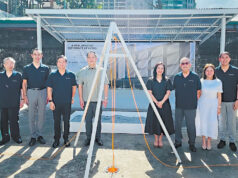By Kap Maceda Aguila
WHICH high-profile couple will get hitched, which movie will reap all the critics’ awards, and which public official will be impeached — all these we will not be answering. What we will do is divine what might be in store for the motoring public as 2018 gets rolling. Are you ready?
AN UNCERTAIN TRAIN RIDE
As the powers that be made a last-minute save to temper the Tax Reform for Acceleration and Inclusion-induced price hike on the purchase of new automobiles this year, industry executives surely heaved a sigh of relief. Also known as the Comprehensive Tax Reform Program (which took effect on Jan. 1), Republic Act 10963 will reduce personal income while applying higher tariff on cars, fuels, tobacco and sugary beverages.
Reports the Department of Finance on its Web site, “TRAIN simplifies the excise tax on automobiles, but lower-priced cars continue to be taxed at lower rates while more expensive cars are taxed at higher rates. This excise will raise revenue in a very progressive manner as the richer buyers tend to own more and expensive cars compared to those who earn less.”
How will this new tariff scheme affect car buyers? Truth to say, quite a number of people were scrambling to make last-minute purchases in the waning moments of 2017, causing shortage for some key models. Now that 2018 is here, will the new scheme, which will effectively increase the sticker price of all vehicles (at lower rates for less-expensive models), keep buyers out of the showroom — particularly of premium marques?
JUNKING JUNK JEEPNEYS
Fifteen is the magic number (or, verily, the number of death) for the erstwhile “king of the road.” Public utility jeepneys 15 years old and above will be culled from the streets starting this year as part of the Department of Transportation’s (DoTr) modernization program. By the end of a three-year transition period (until 2021), only electric and Euro4-compliant jeepneys will be allowed on the road. As reported the DoTr will launch a so-called Motor Vehicle Inspection System to “determine the age of a jeepney and its road-worthiness.”
Many jeepney operators and drivers have been up in arms over the program, which they claim to be “anti-poor,” even as the government has tapped the Development Bank of the Philippines to provide P1.5 billion in assistance to transport companies and cooperatives.
So, are we going to see better days and better jeepneys, or will transport groups continue to give grief to the government and the commuting public as they insist on their clunkers? We think the end of the rolling coffins is in sight, but 2018 will prove to be a make-or-break period.
MORE TRAFFIC IN THE CARDS
DoTr Undersecretary Thomas M. Orbos said that the public should expect heavier traffic this year, particularly in Metro Manila.
“So many projects [this] year, which is part of the building program… will all start simultaneously until the end of the term of the President,” he declared in a news conference. “In order for us to have better infrastructure, we need to go through this heavy traffic… Just remember we will all benefit from it.”
Mr. Orbos listed the Light Rail Transit Line-1 (LRT-1) Cavite extension, the LRT-2 East extension, Metro Rail Transit Line-7, the North Luzon Expressway Harbor Link Segment 10, in Caloocan City, and several bridges in Metro Manila as the projects to commence in 2018.
With the construction glut, expect the government to try out more traffic schemes in an effort to bring much-needed relief for congestion. Of course, if people want these to work, they need to step up as well.
GREATER USE OF RIDE-HAILING APPS
Now that government has gotten a firmer regulatory grasp on transport network vehicle services provided by companies like Uber and Grab, it’s all systems go for these convenient conveyance modes capitalizing on smart phones and the pervasiveness of Internet connection. Even people with cars of their own have seen the wisdom of using TNVS to spare themselves from the hassle of traffic and looking for parking space.
FEWER ROAD-RAGE INCIDENTS
Is this wishful thinking, or a realistic expectation? Well, with more traffic enforcers and policemen and traffic enforcers sporting body cams, complemented by the ubiquity of mobile phones and dashboard cameras, it’s so easy for a temper tantrum to go embarrassingly viral. We hope that this fact is not lost on people with an inexplicable propensity for violence when caught in a fender bender or some other adverse event on the road.
SAFETY WILL COME FIRST
We’re just so sick and tired of large vehicles losing their brakes, running off the road into a ravine, or some other preventable “accident” resulting in a massive loss of life, injuries and damage to property. We predict that government will step in decisively to curb inaction and recklessness by those concerned (i.e., drivers and operators). Surely, if agencies can be firm on clunker jeepneys, they can surely clamp down on these big monsters that can wreak havoc at the snap of a finger.




